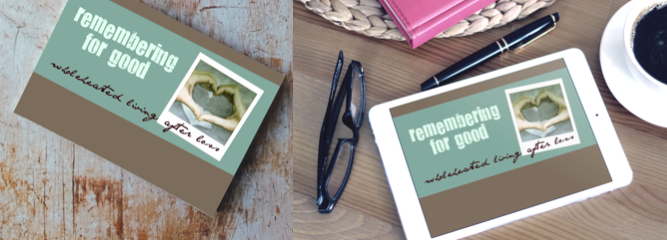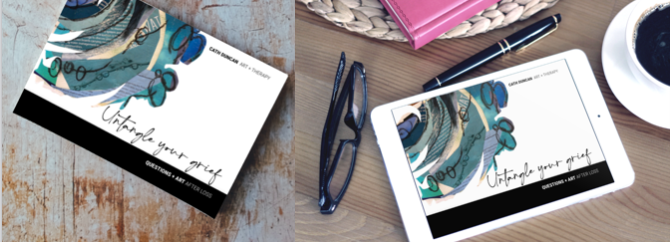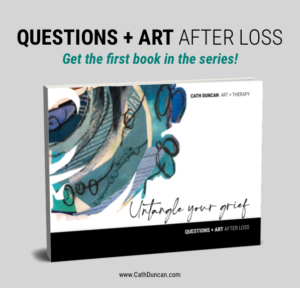“A double bind is an emotionally distressing dilemma in communication in which an individual (or group) receives two or more conflicting messages, in which one message negates the other. This creates a situation in which a successful response to one message results in a failed response to the other (and vice versa), so that the person will be automatically wrong regardless of response.” – Wikipedia
Grieving is ridden with double-binds.
People tell us that we should be talking or crying more – doing more evident “grief work” and expressing our emotions, because this is how to grieve in a healthy way. We must not keep our emotions pent-up inside! If you’re not talking or crying enough about your loss, you are in denial. Basically, the message is, “You’re not grieving right.”
But here’s the double-bind… when we do talk about or express our grief through tears or by sharing honestly about our pain, people around us quickly react with:
- optimistic re-frames (These usually start with the words, “at least…” As in, “At least you have other children.” “At least your father lived a long life.”)
- “let-me-fix-you” advice about how to grieve, how you need to “let go” and what you should do to “get closure.”
- suggestions that you should see a counselor (who will advise you about how to grieve).
The underlying message of this response is also, “You’re not grieving right.” Grieving people navigate a world of double-binds where, regardless of the way they do or do not experience or express their grief, they’re given the message, “You’re doing it wrong.”
Shame: the natural consequence of double-binds.
“Shame is the intensely painful feeling or experience of believing we are flawed and therefore unworthy of acceptance and belonging.” – Brené Brown
When we consider that grieving people are receiving the message, “You’re doing it wrong,” on a daily basis and in multiple relationships, alongside societal language that describes grief as something to “recover from” and a general cultural perspective that views grief as a sign of mental illness or broken-ness, it’s easy to see how people who are grieving begin to feel ashamed in their grief. (“Perhaps I am flawed… And if I am so flawed, perhaps my greatest fear has been realized and I’m not worthy of acceptance and belonging.”)
Shame is an excruciatingly painful emotion, so that’s reason enough for my interest in helping grieving people to experience “shameless grief.” But the destructive effects of shame go deeper than that.
Shame makes us want to hide parts of ourselves, or even all of ourselves, so we withdraw emotionally and perhaps even physically in our relationships with friends and family. Social support (meaning the informal support provided by friends and family, not professional support!) is the undisputed most significant resilience factor in the trauma and grief research. Shame disconnects us from that rich source of resilience. Perhaps worse than that, shame fosters a distrust and judgement of ourselves. We begin doubting and fighting ourselves and we disconnect from our intuitive wisdom – the very thing that we need most when we’re inventing our lives again after loss.
Shameless grief is hard enough, but shame-filled grief is pure loneliness, disconnection, vulnerability and despair.
How to free yourself from double-binds and shame.
- The place to begin is with noticing the double-binds. If you’re getting advice from people that is in direct opposition of other advice you’ve been given, then it’s probably a double-bind.
- Understand the inherent freedom in double-binds. Double-binds feel like we’re being presented with 2 options, both of which will confirm that we’re doing it wrong and we’re broken or ill. This can feel like a horrible, constrictive and painful trap. But the real truth of a double-bind is that it represents a situation where you have more freedom than ever to choose your own path. If there are divergent experiences and perspectives then this means that grief is different for each person. This means that you can’t do it “wrong” because there is no single “right” or “wrong.” You’re free to choose your own way!
- Commit to trusting in your own natural resilience and resourcefulness. Depending on how much shame has piled up on top of your grief, this might sound easy and simple, or it might sound like a long journey. What I can assure you is that you are already naturally resilience, resourceful and creative. This is not something you have to learn or work for. It’s something you just have to remember and choose to believe in. Self-trust will always demand courage. But that’s okay – you have an abundance of that too.
- Ask yourself what you need and give yourself permission to do, have or feel that – even if other people around you think you should do, have or feel something else.
There. Can you feel how much lighter that is?
Would you like guidance to explore and heal your grief?
I’ve put together a 35-page grief “workbook” for you; an introduction to Remembering For Good and living wholeheartedly after loss. Learn more about the Remembering For Good grief workbook.
The first book in the QUESTIONS + ART AFTER LOSS series, Untangle Your Grief is a beautiful 65-page book of artful questions and creativity-sparking art prompts to help you to create meaning, belonging, and hope after loss.



